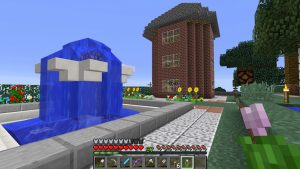The Aesthetics of Imperfection
During my ongoing literature review I often discover interesting facts about things I’ve never thought about. Sometimes I can connect these facts with my own observations: The result is mostly a completely new idea why things are as they are. Maybe these ideas are new to you, too. Therefore I’ll share my new science based knowledge with you!
This week: This time, I think about the aesthetics of imperfection that are mostly found in a player’s first gameplay of a particular game.
In most of the cases, players of building games, such as Minecraft and Cities: Skylines, want to achieve ideal results that look very refined and/or are very efficient. In order to do so, players constantly improve certain elements until they find an ideal way to realize their goals. Often, those games also allow the construction of new projects in the same virtual world enabling them to easily compare older projects with current ones in order to learn from their mistakes and to see how their performance has improved over time.

Serious traffic issues in Cities: Skylines
However, the prime goal of achieving ideal results, which is often rewarded by the game, too, takes away the very asthetic element of imperfection. For instance, old cities or old houses mostly are interesting as things are not done in an ideal or very streamlined way. Instead, they are results of a development process that happened naturally and/or without a clear plan. Interestingly, the special element of imperfection can often be found in a player’s first gameplay as most game mechanics are still unknown to the player and hence the development of a building or city also happens in a very natural way.
Like in the real world, players try to change minor things in order to improve certain elements or fix particular problems of their projects and hence a natural progression takes place. In the end, a player’s first game might not be very streamlined or ideal but offers the same aesthetics of imperfection as many things in the real world.

Minecraft
However, as soon as a player starts a new game, they already have a good knowledge of the game mechanics and can try to approach the game with a clear plan in mind in order to achieve a very streamlined and perfect outcome. Although this can also be very interesting, the results often lack of a unique character and feel sterile.
Personally, I often notice that I really enjoy the first time of playing such a game as the results seem very authentic due to the imperfections. However, as soon as I start a completely new world, I begin to play with a certain plan in mind but often lose interest after a relatively short while as the results start to feel unnatural. This might also be the reason why I still play in the exact same Minecraft world I created as I bought the game some years ago.